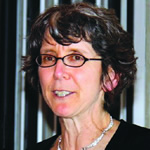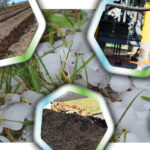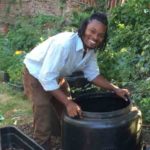
Nora Goldstein
BioCycle August 2014
1) Getting there, as in what tool or method one will use to “get there.”
2) Getting there, as in progress is being made to reaching a goal.
Both definitions apply to food waste collection logistics. Feature article, “Demand Grows For Food Waste Collection Trucks” focuses on equipment used to lift and empty carts and containers and then transport the materials to an organics recycling facility. It illustrates the first use of getting there, e.g., “here is the ‘tool’ used to get food waste there.”
It also illustrates the second meaning upon examining the photo. One can see some honeydew melons, heads of lettuce, an apple, jalapeno and green peppers, and pumpkins. While this produce may have spoiled before it could be rescued for donation, the photo highlights a serious global challenge — how much edible food is being wasted. So while government agencies, nonprofits and private companies have made progress in reducing the amount of food that gets wasted and establishing programs to donate edible food, the bottom line is that only a small dent has been made. In other words, these initiatives are in the early stages of getting to their goal.
This morning, while walking to work, I stopped on the sidewalk next to a convenience store to watch a front-loading packer pick up and empty a 3 or 4 cubic yard container into the truck. What I saw cascading into the truck included cardboard, beverage containers, bananas, donuts, run-of-the-mill garbage, to name a few items. This, in turn, led me to recall a recent road trip from Washington State to Pennsylvania, which involved many stops at convenience stores with gas stations, and highway rest areas. Out of our 30 or more stops (lost count), maybe one or two at most had separate receptacles for trash and recyclable containers. Instead, the garbage cans were overflowing with water and soda bottles, recyclable cups, etc.
What I saw this morning on the way to work, and on our cross-country trek, illustrate both definitions of getting there. When it comes to recyclables, it is truly a no brainer to source separate those items from the trash. The tools exist (e.g., side-by-side recycling and trash receptacles) and it shouldn’t be too difficult to backhaul recyclables to the distribution centers where the beverages came from. Similarly, as this month’s article on trucks and last month’s article on containers (see “Food Waste Collection Innovations”) explain, we have very effective tools (aka equipment) to collect and transport source separated food waste.
So we are good on getting there in terms of tools and methods. With regard to getting there in terms of progress, we are lagging. Over three decades have been spent teaching Americans how to recycle at home, work and school. The fact that we haven’t gotten there with recyclables is painful. Now we are teaching Americans how to source separate food scraps and other organics at home, work and school. Compared to recycling, this is still in the fairly early stages. But thanks to organics recycling pioneers and entrepreneurs, we have the methods in terms of equipment to make progress towards our goal of food recovery and organics recycling. However, the nation is lagging in composting and anaerobic digestion infrastructure to process the recovered organics into high value products. That is something many people have been working on for decades, so that “not being there yet” is painful as well.
We are optimistic that at some point in the not too distant future, an editorial titled “Got There” can be written and published. Where there is will, there is a way, and the answer to “Are we there yet?” can be a definitive yes!









